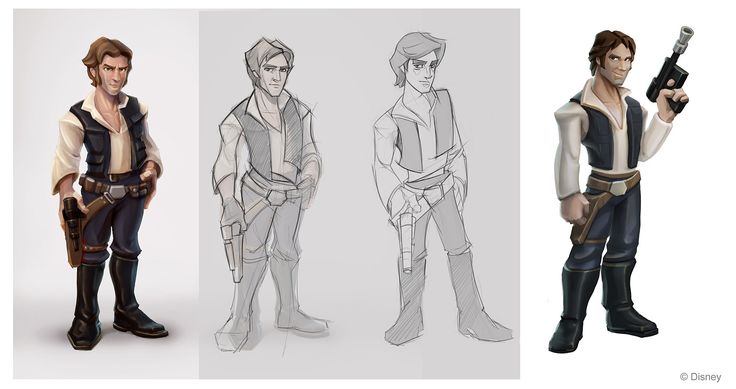The biggest 3d printer
Largest 3D printers in 2022 for XXL prints
Large-scale 3D printers are able to print massive objects thanks to their gigantic build volumes. This guide covers some of the largest 3D printers in the world that are commercially available.
Last update June 23, 2022
We removed discontinued products and updated the BLB Industries The BOX lineup, which has been replaced by The Industry MAGNUM. We also added MASSIVit's latest solution, the Massivit 10000.
Table of contents
Handpicked related content
Large scale 3D printers (XXL): 2022 selection
BIG-Meter V4
F1000
BigRep ONE v4
400 Series WORKBENCH XTREME
T3500
MAGNUM
Massivit 10000
MAMA
3D printing furniture
3D printing large prototypes
3D printing production series
Customized large scale 3D printers
What are the best large scale 3D printers?
Large-scale 3D printers have been in the spotlight for quite some time. When we say large scale, we mean it– these machines can 3D print objects of over 1 square meter. They can be used to 3D print pieces of furniture, large prototypes, or several series of smaller objects in one go.
The professional 3D printers featured in our article are basically super-sized versions of ordinary desktop 3D printers. They almost all use extrusion 3D printing technology (FFF) and work the same way as regular desktop printers.
Our “largest 3D printers” selection does not include construction 3D printers, which fit into a different category.
Handpicked related content
If these large scale 3D printers (XXL) are too big, check out our other selections:
- Large format 3D printers (XL)
- Large volume 3D printers (L) for desktops/benchtops
- Large resin 3D printers (L)
Large scale 3D printers (XXL): 2022 selection
| Brand | Product | Build size | Country | Price Approximate starting prices based on supplier-provided information and public data. | |
|---|---|---|---|---|---|
| Modix This brand is a certified partner from our network. | BIG-Meter V4 | 1010 × 1010 × 1010 mm39.76 × 39.76 × 39.76 in | Israel | $ 13,50013 723 €11,975 £2,012,256 ¥ | Buy |
| CreatBot | F1000 | 1000 × 1000 × 1000 mm39.37 × 39.37 × 39.37 in | China | $ 29,99930 494 €26,610 £4,471,531 ¥ | Buy |
| BigRep | BigRep ONE v4 | 1005 × 1005 × 1005 mm39.57 × 39.57 × 39.57 in | Germany | $ 30,00030 000 €26,611 £4,471,680 ¥ | Quote |
| 3D Platform | 400 Series WORKBENCH XTREME | 1000 × 1500 × 700 mm39.37 × 59.06 × 27.56 in | United States | $ 49,99950 823 €44,351 £7,452,651 ¥ | Quote |
| Tractus3D | T3500 | ⌀ 1000 x 2100 mm | Netherlands | $ 59,00049 900 €52,335 £8,794,304 ¥ | Quote |
| The Industry | MAGNUM | 1500 × 1200 × 1200 mm59. 06 × 47.24 × 47.24 in 06 × 47.24 × 47.24 in | Sweden | $ 135,000129 990 €119,750 £20,122,560 ¥ | Quote |
| MASSIVit 3D | Massivit 10000 | 1420 × 1110 × 1500 mm55.91 × 43.7 × 59.06 in | Israel | upon request | Quote |
| Modix This brand is a certified partner from our network. | MAMA | 2000 × 5000 × 1000 mm78.74 × 196.85 × 39.37 in | Israel | upon request | Quote |
Expand to see more specs
The products in the table are ranked by price (low to high).
| Brand | Product | Build size | Build volume | Country | Price Approximate starting prices based on supplier-provided information and public data. Prices may vary by region, over time and do not include additional products or services (taxes, shipping, accessories, training, installation, …). | |
|---|---|---|---|---|---|---|
| Modix This brand is a certified partner from our network. | BIG-Meter V4 | 1010 × 1010 × 1010 mm39.76 × 39.76 × 39.76 in | 1030.3 L | Israel | $ 13,50013 723 €11,975 £2,012,256 ¥ | Buy on Modix |
| CreatBot | F1000 | 1000 × 1000 × 1000 mm39.37 × 39.37 × 39.37 in | 1000 L | China | $ 29,99930 494 €26,610 £4,471,531 ¥ | Buy on CreatBot |
| BigRep | BigRep ONE v4 | 1005 × 1005 × 1005 mm39.57 × 39.57 × 39.57 in | 1015.08 L | Germany | $ 30,00030 000 €26,611 £4,471,680 ¥ | Get a quote |
| 3D Platform | 400 Series WORKBENCH XTREME | 1000 × 1500 × 700 mm39.37 × 59.06 × 27.56 in | 1050 L | United States | $ 49,99950 823 €44,351 £7,452,651 ¥ | Get a quote |
| Tractus3D | T3500 | ⌀ 1000 x 2100 mm | 1649.34 L | Netherlands | $ 59,00049 900 €52,335 £8,794,304 ¥ | Get a quote |
| The Industry | MAGNUM | 1500 × 1200 × 1200 mm59. 06 × 47.24 × 47.24 in 06 × 47.24 × 47.24 in | 2160 L | Sweden | $ 135,000129 990 €119,750 £20,122,560 ¥ | Get a quote |
| MASSIVit 3D | Massivit 10000 | 1420 × 1110 × 1500 mm55.91 × 43.7 × 59.06 in | 2364.3 L | Israel | upon request | Get a quote |
| Modix This brand is a certified partner from our network. | MAMA | 2000 × 5000 × 1000 mm78.74 × 196.85 × 39.37 in | – | Israel | upon request | Get a quote |
Overview of the best large scale professional 3D printers
The Modix BIG-Meter offers over one cubic meter of build volume. As all Modix printers do, the BIG-Meter is delivered as a self-assembly kit, which contributes to the printer’s relatively low price point.
This large scale 3D printer comes with a dual extruder (E3D Aero and E3D Volcano print heads), full automatic bed leveling (bed tile and bed mapping), a Wi-Fi controller, and a range of industrial-grade components. The print bed heats up to 120°C.
The print bed heats up to 120°C.
Buy on Modix Get a quote Add to comparison
The F1000 from CreatBot offers a full cubic meter of fully enclosed and heated (60°C) build volume. There’s also a filament chamber that can hold two spools of up to 5kg each and heat up to 45°C or 65°C.
Its dual nozzles are able to heat up to 420°C, while the print bed heats up to 100°C. Compatible materials range from standard PLA and ABS to PETG and carbon fiber-filled and flexible materials.
Buy on CreatBot Get a quote Add to comparison
The BigRep ONE, currently in its third generation of upgrades and updates, is one of the only large-sized 3D printers to provide independent dual extrusion (IDEX). IDEX can cut production times in half thanks to duplication or mirror modes.
The printer’s large touchscreen grants access to the webcam and allows users to resume prints even after a power outage. The filament holder is able to hold multiple spools of up to 8kg.
Contact manufacturer Get a quote Add to comparison
This large format 3D printer with dual extrusion is customizable.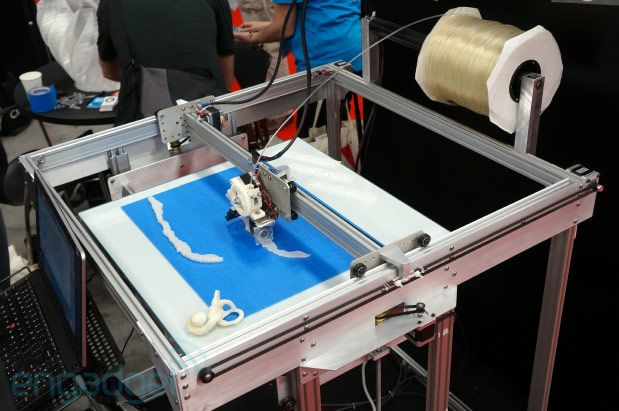 Various extruders are available, and it’s possible to add an enclosure. The enclosure can be heated and/or include an air filter as well.
Various extruders are available, and it’s possible to add an enclosure. The enclosure can be heated and/or include an air filter as well.
It’s possible to choose from two different control systems; with Wi-Fi or with Ethernet connectivity. The automatic leveling probe touches over 400 points on the print bed to ensure optimal calibration.
Contact manufacturer Get a quote Add to comparison
The T3500, a huge delta 3D printer, offers a massive build size that can 3D print to an exact scale of 1:1 up to 2.1 meters high.
The large-scale Tractus3D T3500 can 3D print exotic materials with its hot-end extruder capable of reaching up to 300°C. This 3D printer features a heated bed and can be equipped with an optional dual extruder.
Contact manufacturer Get a quote Add to comparison
The Industry MAGNUM is a very large format 3D printer by The Industry (previously called BLB Industries), a manufacturer based in Sweden. This XXL 3D printer offers a build volume of 2.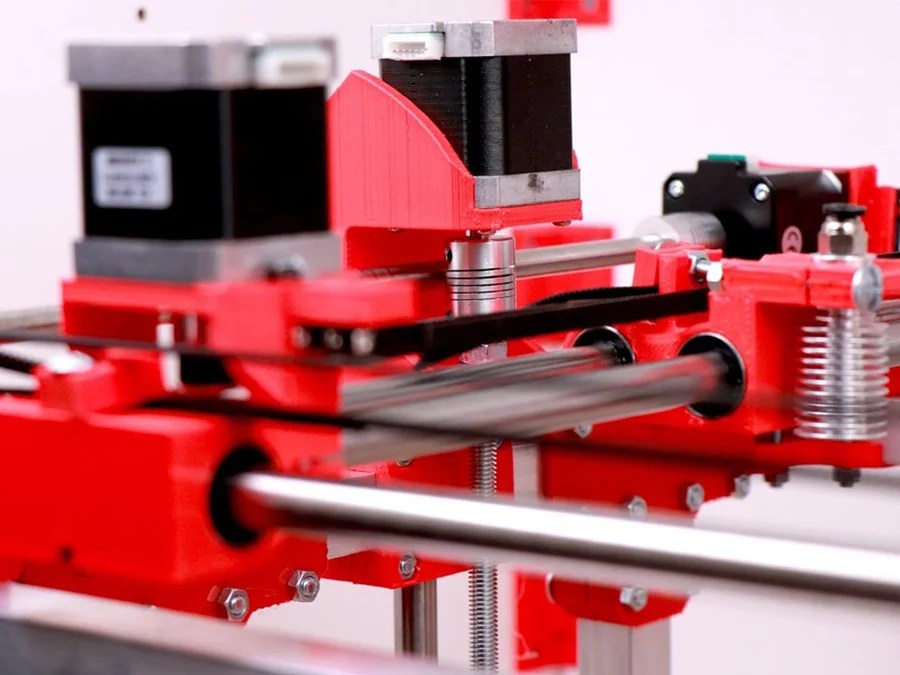 16m³ and comes with a set of nozzles ranging from 2 to 8mm in diameter. The MAGNUM is based on the company’s previous model, the BLB Industries THE BOX.
16m³ and comes with a set of nozzles ranging from 2 to 8mm in diameter. The MAGNUM is based on the company’s previous model, the BLB Industries THE BOX.
Contact manufacturer Get a quote Add to comparison
The Massivit 10000 is an industrial large format 3D printer produced by MASSIVit 3D. MASSIVit 3D is a 3D printer manufacturer based in Israel. This 3D printer offers a build volume of 1420 x 1110 x 1500 mm.
Contact manufacturer Get a quote Add to comparison
Modix has nicknamed their printer “Personal Car Factory”, a quick way to indicate how big the MAMA (Modular Additive Manufacturing Assembler) system really is. It’s equipped with a high-speed pellet extruder, and is also capable of 3D printing with spools of filament.
This huge FFF 3D printer isn’t available yet.
Contact manufacturer Get a quote Add to comparison
Applications for large scale 3D printing
3D printing furniture
The largest 3D printers can be used to 3D print furniture in one go. This includes tables, chairs, and even bathtubs. 3D printing furniture can also generate unique, complex pieces that would be difficult to create otherwise.
This includes tables, chairs, and even bathtubs. 3D printing furniture can also generate unique, complex pieces that would be difficult to create otherwise.
Hence, customized furniture is becoming more and more accessible thanks to extra-large 3D printers.
The BigRep One is in action. Source: QMES3D printing large prototypes
The professional large-scale 3D printers featured in our article can also be used to 3D print large prototypes. This enables businesses to test out their products before actually launching production. Industrial designers and engineers are able to perform more revisions in significantly less time.
They can test their future products extensively while at the same time reducing the production-to-market time.
3D printing production series
Large-scale 3D printers don’t have to exclusively 3D print large objects and prototypes. Their huge build platform also enables 3D printing big series of smaller objects.
Customized large scale 3D printers
There are several manufacturers that mainly offer tailored solutions rather than standardized 3D printer models. Tobeca, for instance, is a French team that builds 3D printers from scratch and is based entirely on their customers’ needs and requirements.
US-based Erectorbot also provides on-demand builds, although they do have a lineup of standard models. Then there’s Colossus, a company in Belgium that constructs 3D printers within shipping container-like structures. CNC Barcenas, a Spanish manufacturer, also offers tailored, large-scale 3D printers with a range of options to choose from.
9 Largest 3D Printers in the World
by Jennifer Jones
The future is now in terms of 3D printing technology! 3D printers can be manufactured to work with a variety of different materials, making their potential applications nearly endless. Today’s 3D printers are able to produce everything from plastic figurines and scale models to entire vehicle shells and buildings! As you might imagine, some of these printers have to be pretty huge in order to accommodate such impressive prints.
Today’s 3D printers are able to produce everything from plastic figurines and scale models to entire vehicle shells and buildings! As you might imagine, some of these printers have to be pretty huge in order to accommodate such impressive prints.
So, just how massive can the largest 3D printers get? Today we’ll look at 9 of the biggest 3D printers available for use today and rank them according to the volume of printing space each one provides. We’ll also learn some cool facts about each amazing machine!
-
Norsk Titanium Direct Metal Deposition
Size: 2.6 – 3.1 cubic meters / 94 – 112 cubic feet
Type of Process: Additive manufacturing
Material Types: Metals
Use and Accessibility: Industrial
Source: 3dprintingmedia.network
This 3D printer features Norsk’s carefully-developed Direct Metal Deposition technology in its 3D printing process. This process utilizes a plasma arc to weld metal directly on top of itself, building up layer after layer until the 3D print is complete. The Norsk company has a worldwide presence and boasts such influential partners as Boeing and Mecachrome.
This process utilizes a plasma arc to weld metal directly on top of itself, building up layer after layer until the 3D print is complete. The Norsk company has a worldwide presence and boasts such influential partners as Boeing and Mecachrome.
This 3D printer is capable of printing titanium parts that measure up to 120 x 120 x 180 cm.
-
ExOne Exerial
Size: 3.696 cubic meters / 130.52 cubic feet
Type of Process: Additive manufacturing / Powder binder jetting
Material Types: Metals and ceramics
Use and Accessibility: Commercial and industrial
Source: digitalengineering247.com
This 3D printer was designed specifically with a focus on serial sand core and mold production. It features ExOne’s Binder Jetting technology, meaning that it precisely places a liquid binding agent that particulate matter can adhere to.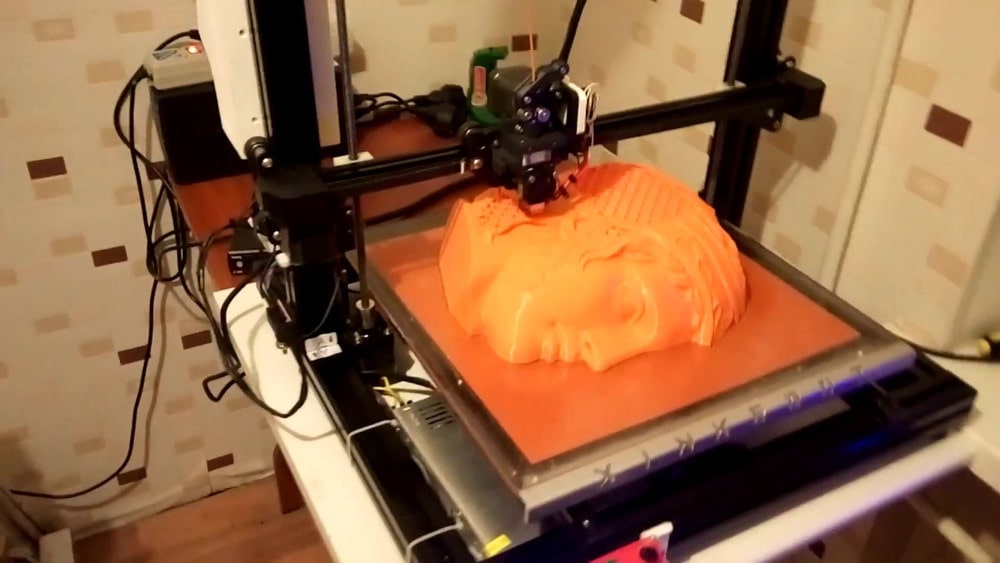 Alternating layers of liquid binder spray and particulate building material, such as metal or ceramic, are built up until the 3D print is complete.
Alternating layers of liquid binder spray and particulate building material, such as metal or ceramic, are built up until the 3D print is complete.
This 3D printer is available for purchase, but it costs a pretty penny at $500,000 or more!
-
Voxeljet VX4000
Size: 8 cubic meters / 282 cubic feet
Type of Process: Sand Casting (Powder binder jetting)
Material Types: Sands
Use and Accessibility: Commercial and industrial
Source: wikimedia.org
The Voxeljet VX4000 is used to create similar prints to those of the ExOne Exerial, maintaining a strong focus on sand casting molds. The molds produced with the VX4000 are usually then used to serially cast architectural parts, artistic components, and jewelry. The 3D printer is versatile and adaptable in that it can print either one large mold, or numerous batches of smaller ones.
The Voxeljet AG company has been listed on the New York Stock Exchange since 2013.
-
D-shape
Size: 9 cubic meters / 317 cubic feet
Type of Process: Powder binder jetting
Material Types: Sands and ceramics
Use and Accessibility: Industrial
Source: esa.int
This one-of-a-kind 3D printer was patented in 2006 after being developed by Enrico and Riccardo Dini, who also founded the Monolite UK Ltd company that built the printer. The 3D printing project actually started in 2004 with the idea to take the best parts of a standard, office-sized 3D printer and scale them up. The D-shape project operates in several different sectors, each of which focuses on different applications of 3D printing.
Did you know?The D-shape uses particulates and a magnesium-based binder to build up a finished printed material that’s extremely similar to sandstone or cement.
-
KamerMaker
Size: 14 cubic meters / 494 cubic feet
Type of Process: Additive manufacturing
Material Types: Metals, sands, and ceramics
Use and Accessibility: Industrial and construction
Source: flickr.com
DUS Architects advertises the KamerMaker as “The World’s first portable large-scale 3D printer” and has won numerous awards for its innovative achievements. This printer was also the first one to build an entire house on the canal in Amsterdam while making use of RepRap FFF-type technology. And, just in case one incredible 3D printer wasn’t enough, a second KamerMaker was created soon afterwards in order to speed up production!
Did you know?The name “KamerMaker” means “Room Builder” in Dutch.
-
Cincinnati Incorporated BAAM (BAAM CI)
Size: 25 cubic meters / 930 cubic feet
Type of Process: Additive manufacturing
Material Types: Plastics
Use and Accessibility: Industrial
Source: thefabricator. com
com
This printer is known for being able to 3D print plastic industrial parts that are strong enough to bend metal, as well as for printing an entire life-size car! The BAAM CI has also been used to produce a wide variety of other scale models, such as models of the Orion spacecraft and the F-22 Raptor. This 3D printer’s method of using thermoplastics for its prints makes the process unusually low-cost, considering the size of the final products.
Did you know?BAAM pulled off its 3D print of the Strati car with help and technology from Oak Ridge National Laboratory.
-
Sciaky EBAM 300
Size: 112 cubic meters / 368 cubic feet
Type of Process: Electron Beam Additive Manufacturing
Material Types: Metals
Use and Accessibility: Commercial and industrial
Source: sciaky.com
The titanium thread that’s melted for the printing process for the massive Sciaky EBAM 300 is 3 mm thick! This 3D printer is primarily used to repair and manufacture high-performance industrial parts. The Sciaky company launched its EBAM project in 2009 with the goal of streamlining and simplifying the manufacturing process in order to save industrial companies time and money.
The Sciaky company launched its EBAM project in 2009 with the goal of streamlining and simplifying the manufacturing process in order to save industrial companies time and money.
Among the benefits of time-cost effectiveness, the EBAM 3D printing systems also produce less waste throughout their printing processes!
-
BetAbram P1
Size: 288 cubic meters / 10,170 cubic feet
Type of Process: Electron Beam Additive Manufacturing
Material Types: Sands and ceramics
Use and Accessibility: Industrial and construction
Source: YouTube.com
Slovenian company BetAbram is said to be one of the key pioneers in terms of 3D printing houses, and the P1 is specifically engineered for the purpose of printing houses. This printer uses the reliable binder jetting process to produce a material that’s extremely comparable to concrete, making it perfectly suited to printing out architectural elements that are structurally sound.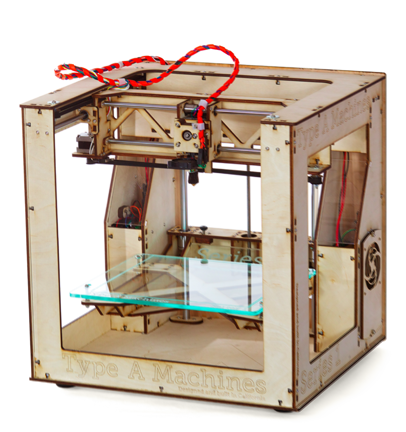 The printer also utilizes two different nozzles for different types of prints.
The printer also utilizes two different nozzles for different types of prints.
There are two different methods of operating the machine that require one to three people and strike different balances between speed and monetary expenses.
-
Winsun
Size: 2,466 cubic meters / 87,120 cubic feet
Type of Process: Powder binder jetting
Material Types: Sands and ceramics
Use and Accessibility: Industrial and construction
Source: siliconangle.com
The Winsun 3D printer is the largest 3D printer in the world. The company, known as Winsun in China and Yingchuang Building Technique throughout much of the world, states that its 3D printer can print out an entire standard-sized house for the cost of approximately $4,800 in a single day! However, there has been a fair amount of debate and controversy over whether the technology was ethically developed and some people claim that stolen patents were used to formulate Winsun’s 3D printer.
Winsun states that its printer can obtain up to 50% of the ink material used in its printing process from mine tailings and construction waste.
interviews with the developer of industrial FDM installations
Rapid prototyping
Experts recommend
3D printers
Science and education
Author: Viktor Naumov
Author: Viktor Naumov
Discovery 3D Printer: brand history | Technology and equipment line | Benefits of 3D printing with pellets | Applications and implementation examples
Today, many companies use the additive manufacturing solutions available on the market as complementary tools. More and more users are considering introducing 3D technologies into the production process of their enterprises, which is why the industry is actively adapting to new demands.
Some manufacturing sectors require large models and parts that are often difficult to produce with traditional methods. In this sense, large-format 3D printing plays a fundamental role in the creation of such structures, providing lower costs and faster production times.
In this sense, large-format 3D printing plays a fundamental role in the creation of such structures, providing lower costs and faster production times.
One company developing such solutions is the Discovery 3D Printer . The equipment of this brand for 3D printing of large products is used by enterprises and organizations of various industries, including railway transport and aviation. We bring to your attention an interview of 3dnatives.com about Discovery 3D Printer solutions with one of the equipment developers.
Find out more about large-format additive manufacturing: 3D printer catalog, tasks, case studies, and useful materials on the Discovery 3D Printer website in Russian
3DN: Please tell us about yourself and your role in additive manufacturing.
– My name is Francisco Barcenas and I am the Director of R&D and Innovation at CNC Bárcenas / Discovery 3D Printer. My main responsibilities include the design and development of large-scale additive plants, as well as the research and testing of new materials, which we carry out in close cooperation with our suppliers. Among them is SABIC, a world leader in the development of special materials for large-scale 3D printing (LFAM). I also advise our clients on 3D modeling for additive manufacturing, lead innovative projects and consult on our 3D printing technologies.
Among them is SABIC, a world leader in the development of special materials for large-scale 3D printing (LFAM). I also advise our clients on 3D modeling for additive manufacturing, lead innovative projects and consult on our 3D printing technologies.
Francisco Barcenas
3DN: What is Discovery 3D Printer and when was it founded?
– Discovery 3D Printer is the division responsible for 3D printing solutions of CNC Bárcenas, founded in Valdepeñas (Ciudad Real, Spain) in 2009. The company also specializes in the production of CNC industrial equipment. The Discovery 3D Printer is the result of many years of intense in-house research, development and innovation, culminating in a contract with BSH Group, our first customer in the industrial sector, specifically their plant in Montagnana, Zaragoza. We still continue to cooperate as suppliers in various technological fields.
In 2020, we partnered with Gaggenau, an innovative BSH Group company based in Lipsheim, France, that manufactures custom CNC machines for its R&D lab.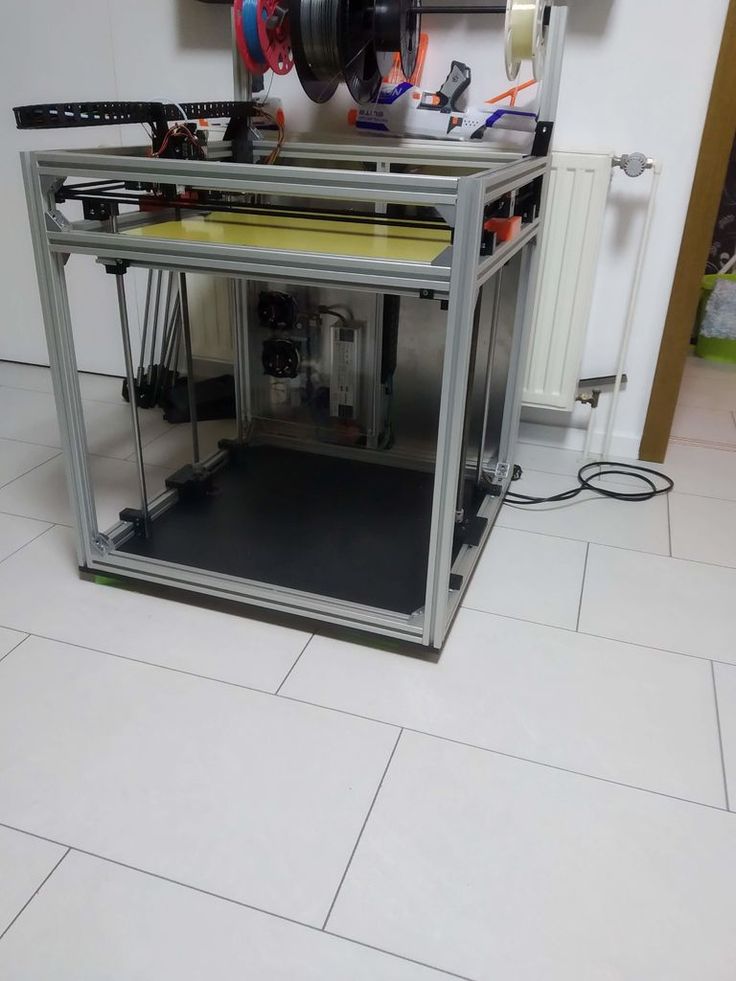 One of the main features of our company is that we provide customized solutions, including combining different technologies (FDM, FGF and post-processing by milling) in one piece of equipment.
One of the main features of our company is that we provide customized solutions, including combining different technologies (FDM, FGF and post-processing by milling) in one piece of equipment.
iQB Technologies is the exclusive distributor of Discovery 3D Printer in Russia. Contact our experts: we will select the equipment and help you implement large-scale 3D printing in your company!
3DN: Explain what your technology is based on? What large format solutions have you developed?
– In 2016, we launched the Discovery 3D Printer, a large-format FDM machine. We continued to improve the performance of the printer, until we finally created its 2020 modification - a high-performance machine with a print volume of up to 1 cu. m. This solution is designed to produce small and large parts at high resolution and speed, as well as using virtually any filament available on the market.
In 2017, we introduced the Super Discovery 3D Printer, an innovative equipment that has no analogues in Europe.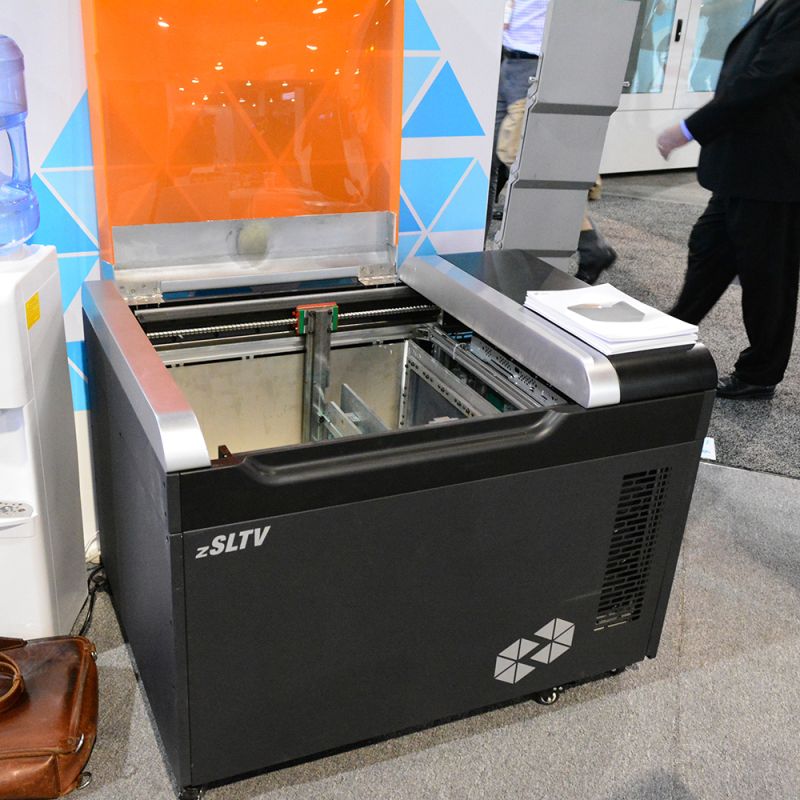 It uses polymer pellet direct extrusion technology, also known as FGF, to create large objects at high speed. This solution reduces the cost by using consumables in the form of strips. This equipment was developed for the Navantia shipbuilding company, which over the past few years, as part of its strategic Shipyard 4.0 initiative, has introduced the most innovative technological solutions on the market. We also continue to work closely with Navantia on a number of projects (in fact, we are their official supplier of additive manufacturing solutions). And, as I said, we now offer completely customized solutions that combine different technologies and print volumes.
It uses polymer pellet direct extrusion technology, also known as FGF, to create large objects at high speed. This solution reduces the cost by using consumables in the form of strips. This equipment was developed for the Navantia shipbuilding company, which over the past few years, as part of its strategic Shipyard 4.0 initiative, has introduced the most innovative technological solutions on the market. We also continue to work closely with Navantia on a number of projects (in fact, we are their official supplier of additive manufacturing solutions). And, as I said, we now offer completely customized solutions that combine different technologies and print volumes.
3DN: What is the competitive advantage of 3D printing with pellets? And what are the limitations of this technology?
Let me tell you a few benefits.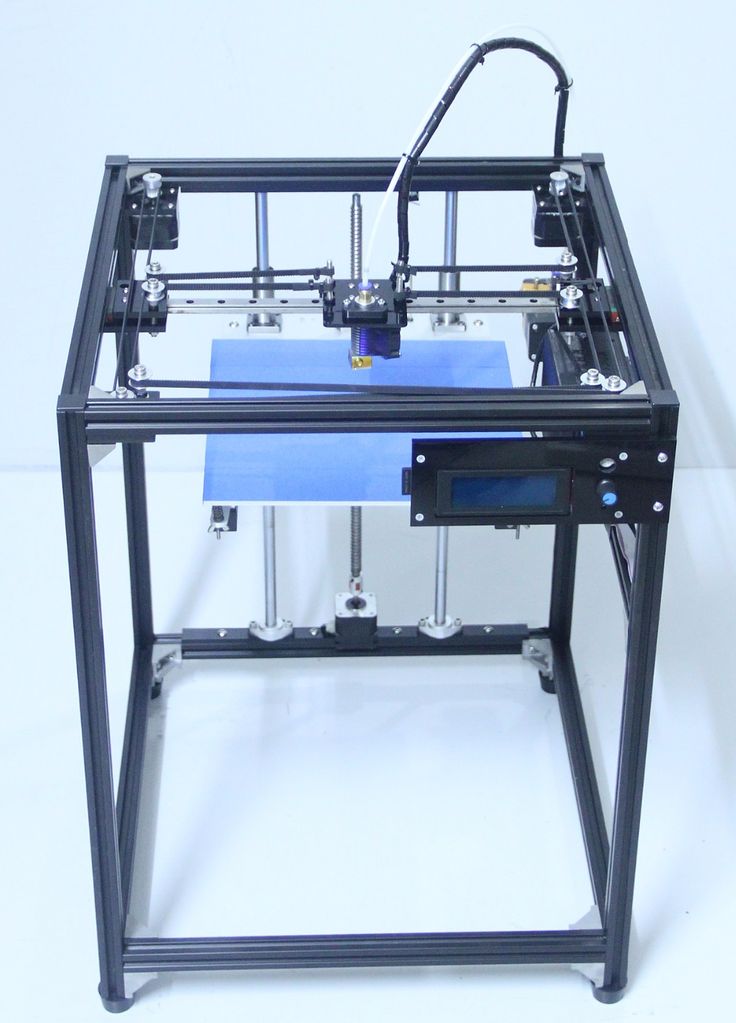 For example, our technology allows you to create very large parts in a short time and at a lower cost than when using a filament. In addition, the possibility of using a huge range of thermoplastics, including technical ones, is very interesting. This opens up a wide range of applications, such as mold making, which offer great advantages over traditional processes.
For example, our technology allows you to create very large parts in a short time and at a lower cost than when using a filament. In addition, the possibility of using a huge range of thermoplastics, including technical ones, is very interesting. This opens up a wide range of applications, such as mold making, which offer great advantages over traditional processes.
Our Super Discovery 3D Printer is available in Standard, Compact, Hybrid and as a 3D printing and post-processing system (Workstation). It allows you to flexibly, quickly and cost-effectively produce large parts - molds, tooling, small series of original or spare parts and functional prototypes using high performance materials reinforced with fibers and minerals. All these materials comply with the regulations, including fire safety, in force in each industry.
In the specific field of R&D and innovation, they can be an ideal basis for developing or improving new materials for additive manufacturing according to market requirements, as well as for testing mechanical, physico-chemical, technological and other properties. An important factor is the environmental friendliness of our solutions.
An important factor is the environmental friendliness of our solutions.
As for the limitations, I'd rather talk about the specific characteristics of this technology. For example, sometimes you need to change the approach to 3D modeling, and in some cases you need to apply post-processing to polish or coat surfaces. As you know, there are no universal solutions in the field of additive technologies, so we decided to focus on a large format using standard thermoplastic, and, if necessary, technical materials.
3DN: What industries might be interested in your solutions? Can you name any of the clients?
“I don't think there is any manufacturing industry that can't take advantage of large format 3D printing. We work with clients from almost all sectors. In addition to BSH and Navantia, we have partnered with AIRBUS for molds and tooling, and with Hitachi ABB Power Grids for parts with dielectric properties well above standard. In the construction industry, I can name Willy Naessens Group, and CAF Group is one of our most representative customers in the field of ground transportation.
Subway train components printed on an additive Super Discovery 3D Printer (CAF project). This 1300 x 2500 x 1000 mm build chamber printer is the perfect answer to new needs in large format 3D printing
I would also like to note that Discovery 3D Printer solutions are successfully used by several universities, technology and research centers. For example, we have a very close relationship with the Faculty of Mechanical Engineering of the University of Leuven (KU LEUVEN). In Spain, we have been collaborating for several years with the R&D and Innovation Department of the University of Cadiz.
3DN: Can you highlight any additive manufacturing project involving Discovery 3D Printer?
– We are very pleased with the agreement with UROVESA, a leading Spanish company in the sector of civil and military special vehicles. But in particular I would like to highlight our cooperation with the Department of Design of Lightweight Polymer Structures at the Brandenburg University of Technology (b-tu). For many months we have been working on an innovative project for the production of wind turbine blades. The university already has our Super Discovery 3D Printer Workstation, which combines FGF technology with a milling system.
For many months we have been working on an innovative project for the production of wind turbine blades. The university already has our Super Discovery 3D Printer Workstation, which combines FGF technology with a milling system.
In the course of work, it was possible to fully fulfill the client's task, namely, to apply 3D printing for the fast and economical production of molds for autoclaves at high temperature and pressure, as well as other large parts using high-quality materials. The dimensions and characteristics of the solution were fully consistent with the original project. It is important to note that the Super Discovery 3D Printer Workstation was selected through an open tender in Germany, in which any company could take part.
Employees of Brandenburg University of Technology and Super Discovery 3D Printer Workstation
We are very proud of this achievement, because we managed not only to outperform other manufacturers in terms of technical characteristics and low production costs. We have received very positive feedback for our proactive and collaborative approach throughout the entire project management cycle, from the first commercial contact to the completion of the delivery to Brandenburg and subsequent technical support. I also want to add that due to the current situation with the pandemic, this was the first fully digital project, without any physical interaction before delivery.
We have received very positive feedback for our proactive and collaborative approach throughout the entire project management cycle, from the first commercial contact to the completion of the delivery to Brandenburg and subsequent technical support. I also want to add that due to the current situation with the pandemic, this was the first fully digital project, without any physical interaction before delivery.
3DN: A few final words for our readers?
– We ask companies and research centers to contact us and express their interest or concerns about large-format industrial 3D printing. I am sure that we will be able to help in the implementation of research, development and innovation projects, in the introduction of new production processes, which will become an important component of additive manufacturing in the future.
What do you think of the technology developed by Discovery 3D Printers? Leave a comment below or on our social media pages. Subscribe to the blog newsletter and be the first to know the latest 3D technology news!
Subscribe to the blog newsletter and be the first to know the latest 3D technology news!
Source: 3dnatives.com Author: Amelia H. Photo © Discovery 3D Printer
Article published on 09/23/2021, updated on 03/04/2022
90,000 The world's largest metal 3D printer is built in the USNews
Subscribe author
Subscribe
Don't want
2
Ingersoll, MELD Manufacturing and Siemens will build the world's largest metal 3D printer. The system will rely on adapted friction welding technology and will be able to grow parts up to ten meters long.
The work is carried out in the interests of the US military: such 3D printers are planned to be used primarily in the production of mine protection for army vehicles. During the Vietnam War, 73 percent of equipment losses were due to explosions on anti-personnel and anti-tank mines. Modern armored vehicles and armored personnel carriers are designed with enhanced protection, and an important role is played by thick, armored bottoms, often V-shaped and with a minimum of welds.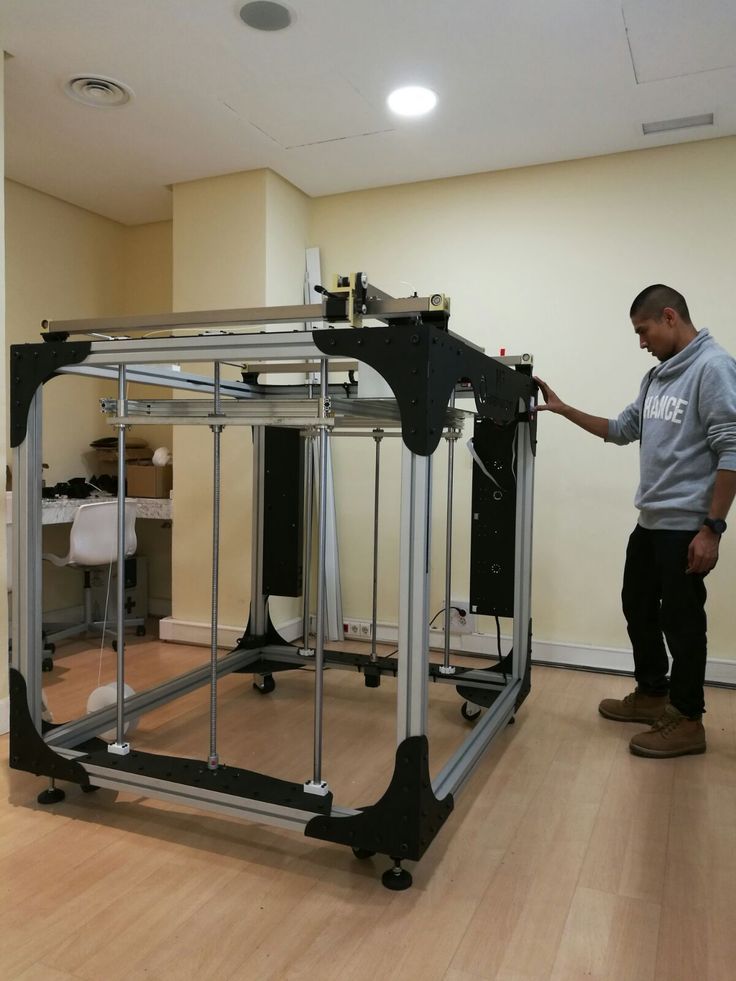
An American Cougar armored vehicle that hit a mine in Iraq in 2006 and drove another three kilometers to the safe zone. The personnel escaped with minor injuries. Photo: Marine Sergeant Christopher Clare
Previous work on the Jointless Hull project of the Army ManTech research program has looked at forging, forming and welding at high current density to reduce weld porosity. The results were rated as satisfactory in terms of strength, but at the same time, there was a lack of geometric freedom and manufacturing flexibility.
As a result, they decided to abandon forging, forming and welding in favor of another technology - production by the method of additive friction deposition with mixing (Additive Friction Stir Deposition, AFSD), that is, Friction Stir Welding, adapted for 3D printing, FSW).
Development work consists of two stages. Not the first one is planned to assemble a demonstrator with a construction area measuring 1x1x1 meter to test the technology and software. The design must then be scaled up to a working volume of 10x6.5x4 meters - the largest among "metal" 3D printers. Length is a conditional characteristic, since the portal structure will move along the rails. Siemens is responsible for the control systems and software.
The design must then be scaled up to a working volume of 10x6.5x4 meters - the largest among "metal" 3D printers. Length is a conditional characteristic, since the portal structure will move along the rails. Siemens is responsible for the control systems and software.
The large-format version is already being assembled by Ingersoll, which has considerable experience in working on large additive systems. In 2019, this venture helped the University of Maine set three Guinness records at once: to make the largest 3D printed boat (seven meters in length), aka the largest one-piece 3D printed object, on the largest 3D printer for working with polymers and polymer composites. The same system is used in the production of large molding tooling, for example for the manufacture of helicopter blades.
The new 3D printer, as already mentioned, will deposit metals using friction stir deposition. This technology is being developed by MELD Manufacturing using the Edison Welding Institute (EWI).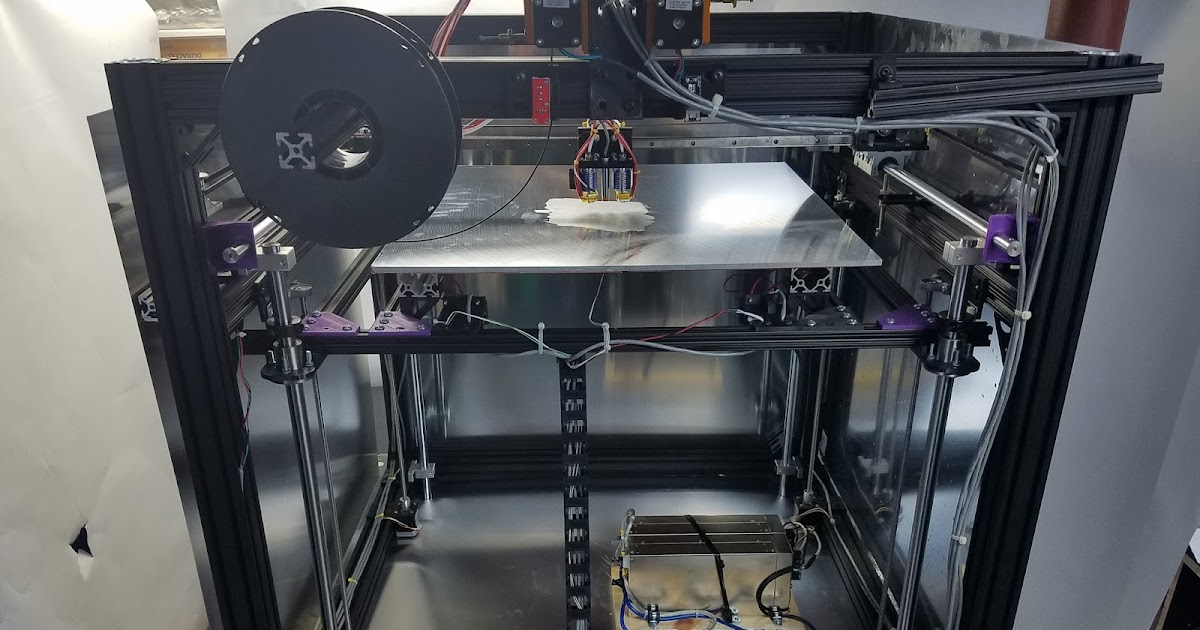 The build-up is carried out by plastic deformation at temperatures below the melting threshold, thereby achieving high isotropy and density without shrinkage and the risk of hot cracks, without the need for a vacuum chamber or protective gas environment. The technology also allows you to create gradient structures from different metals or alloys. Consumables are usually rounded bars with the possibility of using powders of different fractions and even metal shavings.
The build-up is carried out by plastic deformation at temperatures below the melting threshold, thereby achieving high isotropy and density without shrinkage and the risk of hot cracks, without the need for a vacuum chamber or protective gas environment. The technology also allows you to create gradient structures from different metals or alloys. Consumables are usually rounded bars with the possibility of using powders of different fractions and even metal shavings.
MELD Manufacturing already offers several models of additive systems. The latest commercial offer is the L3 3D printer released in 2020 with a working area of 1143x584x584 mm, although the K2 system with a useful volume of 2100x1100x1000 mm is the leader in terms of dimensions. The equipment allows you to work with various steel grades, as well as aluminum, copper, titanium, magnesium and nickel alloys. As a rule, such 3D printers stack layers about one millimeter thick and 38 mm wide, keeping the temperature of the material at 60-90% of melting point. Since the resolution of 3D printing is low, the resulting blanks require intensive machining, but with much less labor and waste than milling from blanks, and with high scalability, which is planned to be demonstrated in practice by the joint efforts of Ingersoll, MELD Manufacturing and Siemens. The commissioning of the large-format system is scheduled for the fourth quarter of this year.
Since the resolution of 3D printing is low, the resulting blanks require intensive machining, but with much less labor and waste than milling from blanks, and with high scalability, which is planned to be demonstrated in practice by the joint efforts of Ingersoll, MELD Manufacturing and Siemens. The commissioning of the large-format system is scheduled for the fourth quarter of this year.
Siemens MELD Ingersoll rotary welding
Follow author
Follow
Don't want
2
More interesting articles
ten
Subscribe to the author
Subscribe
Don't want
The leaders of the business accelerator of Rosatom "InnoHub" and LLC "Incarnation" signed an agreement on the pre.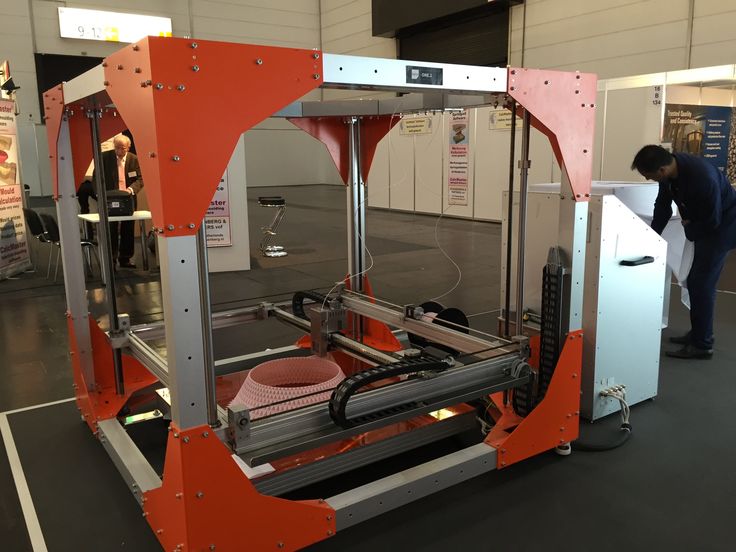


 Prices may vary by region, over time and do not include additional products or services (taxes, shipping, accessories, training, installation, …).
Prices may vary by region, over time and do not include additional products or services (taxes, shipping, accessories, training, installation, …).
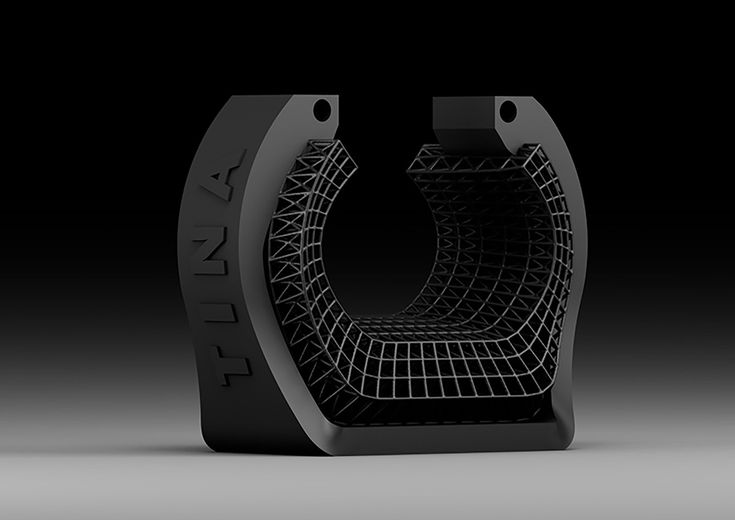

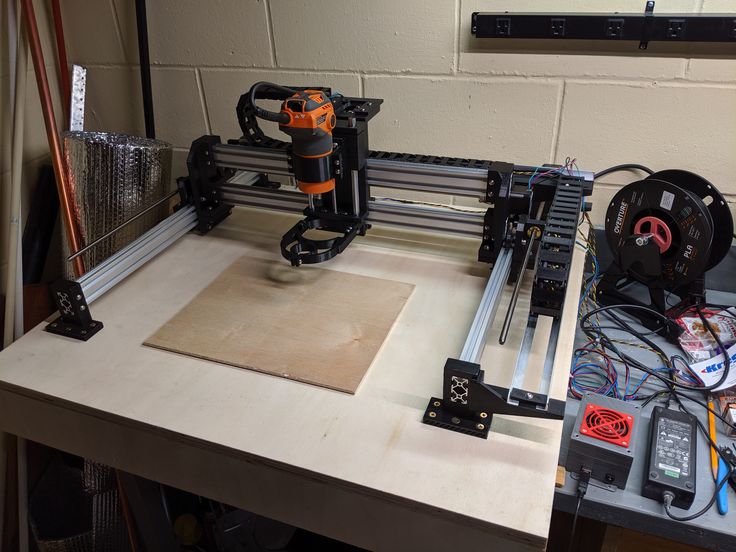




.jpg)

